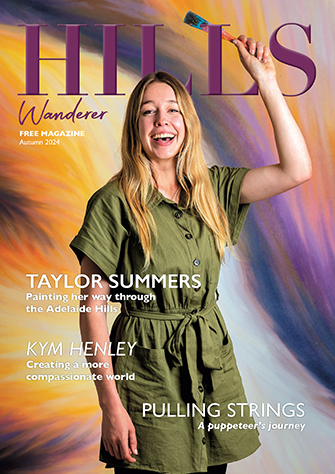When we see a CFS truck racing to an incident – lights flashing, sirens wailing – our hearts are filled with admiration for what is one of Australia’s great volunteer organisations.
But it may come as a surprise that up to a third of new recruits of these front line heroes in the distinctive yellow overalls are now women.
When Emma Chapman joined the CFS at age 18, she was one of only two female volunteers in her brigade.
Following in the footsteps of her father and grand-father – who were both captains of the brigade – the now 24-year-old remembers many times of self-doubt as she navigated her way through an overwhelmingly male dominated organisation.
But when she received call-outs to her first major jobs – including a furious truck fire on the freeway – her doubts dissipated as her training kicked in and she learned a valuable life lesson.
“After going to my first job and really having to think on my own rather than think of all the reasons why I can’t, I got that belief in myself … I can actually do this and I’m capable,” she says.
“The mental barrier can be quite hard to break at first, but once you do, it opens you up to a lot of opportunities.
“The last five to six years have been one of the biggest points of personal growth for me.
“You can grow as a person and as a ‘firey’ at the same time.” Emma – who since has been recruited to Mt Barker’s first MFS brigade and was promoted as the first female senior firefighter at the Mt Barker MFS at the beginning of the year – is one of many women who have signed up to defend the Adelaide Hills on the front line over the past several years. With about a third of new recruits across SA now women – up from about a quarter of new recruits in 2015 – the CFS has become the volunteer organisation of choice for an increasing number of women who not only relish the chance to serve their communities, but who take advantage of the in-house training as a form of personal development.

Basket Range CFS Brigade Captain Pip McGowan is enormously proud of the change which has come over the organisation in the last 20 years.
The almost 40-year CFS veteran oversees a brigade comprising 30% active female volunteers.
She says the blatant discrimination of those early years – the ‘I’m not having a woman on my truck, get off!’ mentality – has gone.
So, she says, has the mindset of women who were being restricted by their own lack of confidence in entering what had largely been a man’s world.
“Society has changed a lot in recent decades and women now have the confidence to say ‘you know what, I can do this’.”
Pip says the training, life skills learned along the way and the friendships formed are primary benefits of becoming a member.
“As a CFS volunteer you only ever come across people when they’re having a really bad day,” she says.
“So, to be able to normalise a situation, be calm and deal with things and help people out is very satisfying.
“We certainly do get a lot of love back from people.”
The influx of female volunteers has been so strong in some areas it has saved some brigades from closing while other units would not be able to respond to some emergencies were it not for this extremely capable pool of talent. CFS deputy chief officer Georgie Cornish says the rise in female participation is of great benefit to both the organisation and the local communities. “Many brigades wouldn’t exist without their female counterparts,” she says.
This, she says, is particularly relevant to the Adelaide Hills where many people travelled to the city for work meaning they are unavailable for daytime incidents.
“If people happen to be at home with younger ones or working from home which has sometimes been more familiar to female employment, then they can actually facilitate some of that day crew which absolutely makes them integral to turning out trucks.”

Brianna Green is a fourth generation CFS volunteer at the Montacute brigade. The 22-year-old joined when she was just 15. At that time she was the only female, but is now one of four female volunteers and has risen through the ranks to second lieutenant.
As a child she witnessed the comings and goings of the station which was “pretty much on our back door” and was filled with a sense of “wanting to help our community in times of need”.
“I’d seen them working every week and wanted to do something as part of a team and wanted a challenge,” she says. “We get amazing opportunities with our training.
“It is a very male dominated industry, but you need to be mentally strong-willed.”
Brianna says she has come up against a “little bit” of resistance from some male members, but says “that’s what’s made me stronger … you have to stand your ground”.
“In the moment you just need to keep your head down and get on with the job and, although sometimes it’s not pretty, when you come out of it you are supported by the team you were with and share that moment together.
“There’s a big adrenaline rush going to a job because you don’t know what you’re going to come across.
“Sometimes the pager message has very limited details.”
Georgie says there are also a host of behind-the-scenes roles which are attractive to people not wanting to attend fires or accidents.
“Roles like planning officers, intelligence officers, resource management, logistics, catering,” she says.
“All this stuff is not about jumping on a truck.
“For every person on a truck we typically need about two or three on the ground behind them to make it work so there’s a lot of roles we need people to do.”
The CFS targets female volunteers and holds workshops and ‘come and try’ courses specifically for women.
And, in response to feedback from frustrated female volunteers, the CFS now has uniforms specifically tailored for female body shapes.
It’s all about catering for its hard working volunteers.




